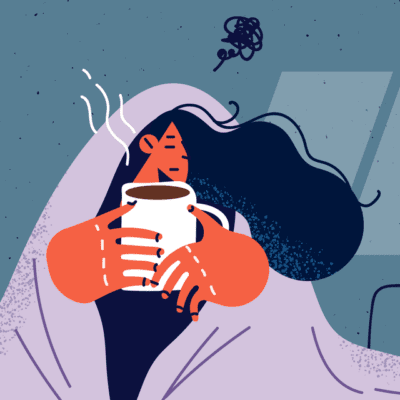

One of the best ways to interpret tarot cards is by understanding their symbolism and imagery. As Vanderveldt explains, symbolism will vary from deck to deck, but in the traditional Smith Rider Waite imagery, the Death card features a knight on horseback, steadily moving ahead. “There’s people in the scene that call back to figures in other cards, all falling underfoot of the death, suggesting no one is immune from change, loss, transformation, and yes, death,” she explains.
Additionally, the armored skeleton knight carries a flag with a white rose, which Vanderveldt notes historically represents the rose of the house of York, but also represents life and renewal in general.
We also see two pillars and the sun setting (or rising?), with the sun being “a nod to the cyclical nature of life and knowing that even though the sun is setting on one thing right now, it will rise again tomorrow,” she tells mindbodygreen.
And those same pillars appear in The Moon card as well, indicating a threshold we must cross, Vanderveldt explains. “We often don’t know exactly what forms our transformation will take, but must trust that we can withstand the darkness before the dawn,” she says.
Lastly, the Death card is often associated with Scorpio, a sign all too familiar with death and rebirth. Scorpio season itself is the time of year in the Northern Hemisphere when “the leaves are dying and falling away and we’re preparing to go inward in the winter,” Vanderveldt notes, adding that death is about the cycles that we all inevitably go through, where the old ways and status quo must fall away.





